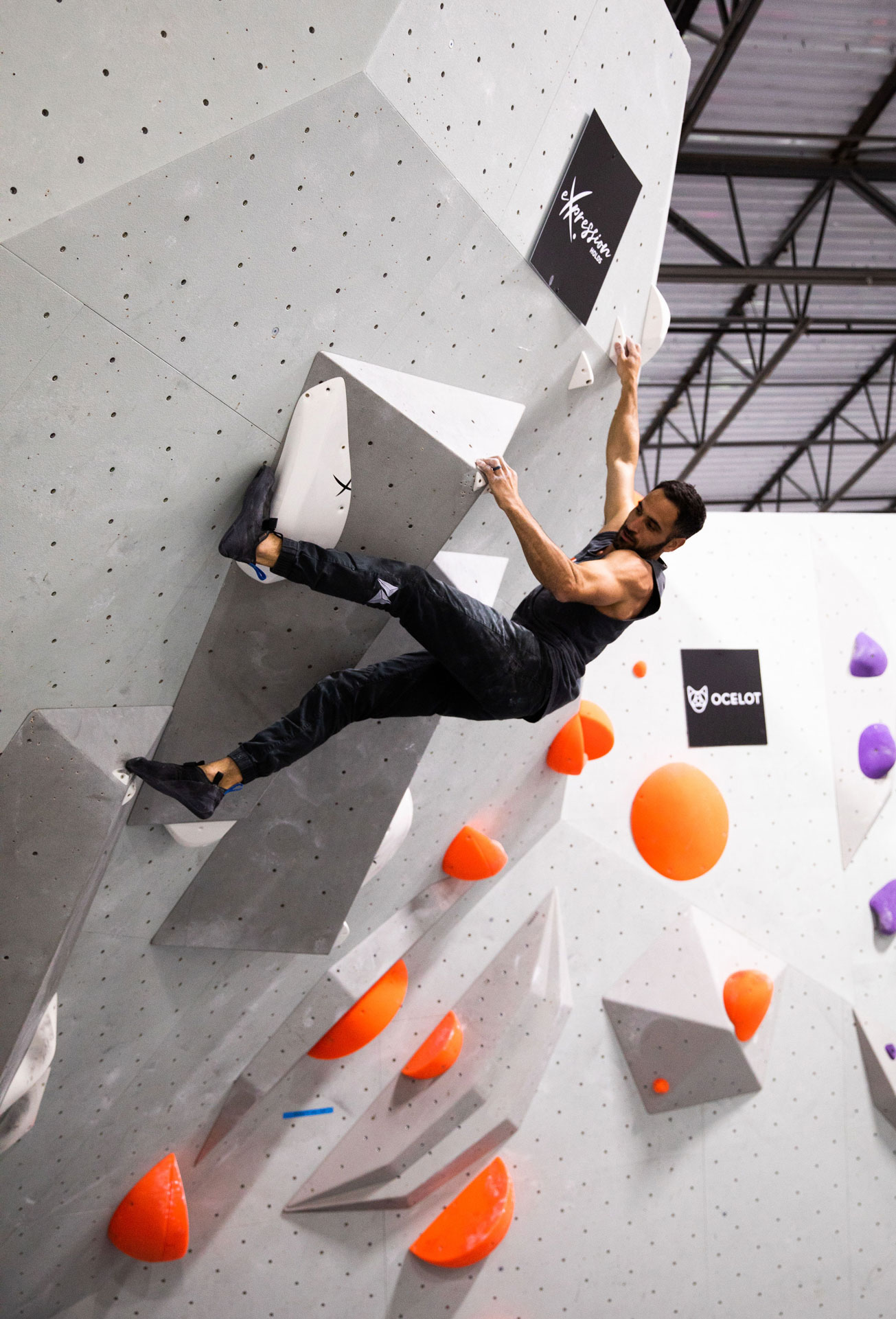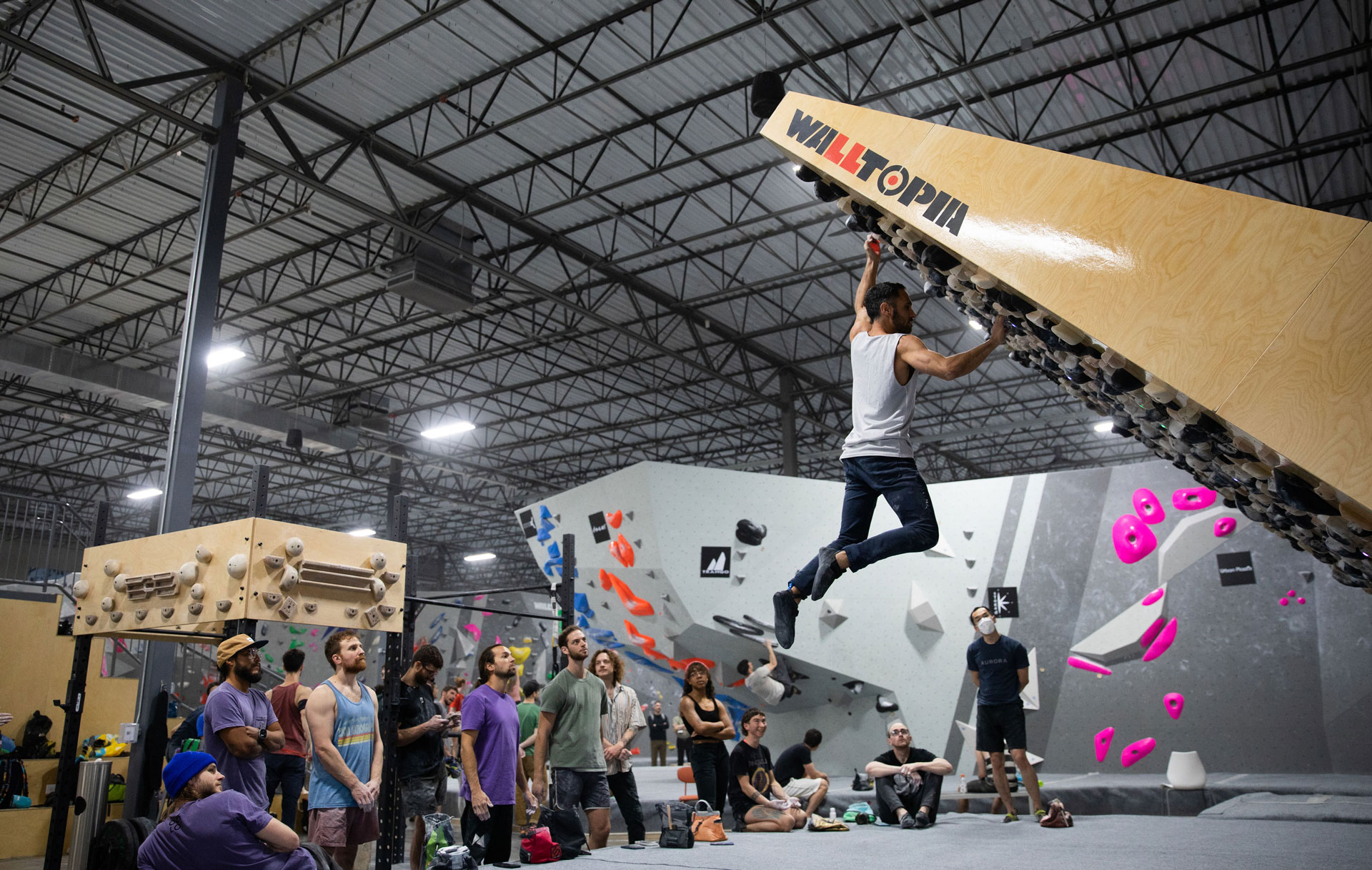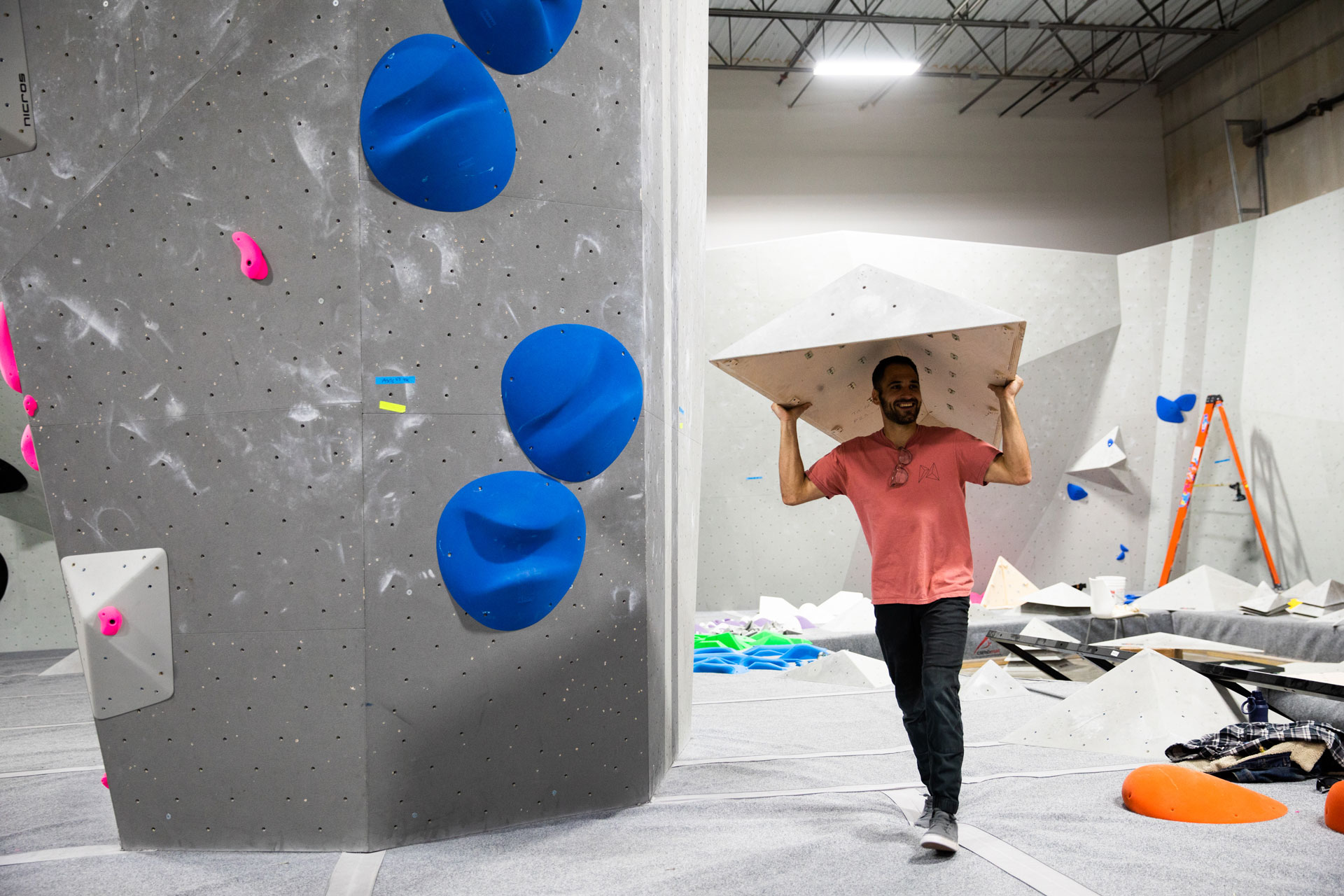
Today’s guest is Dean Privett. He’s the founder of Iron City Boulders in Pittsburgh and Blue Swan Boulders in Orlando; he’s also the president of Moments Climbing, a European gym chain operating three facilities in Finland. Privett gives his take on some of the ways the U.S. climbing gym industry and the European climbing gym industry are similar and different, based on his experience and conversations he’s had in his line of work. He dives into climbing gym construction and operating costs, location preferences, where U.S. gyms may be behind or ahead of the game, and other characteristics of climbing gyms across the pond versus gyms stateside.
Thank you Butora and TRUEBLUE for your support!
And thank you Devin Dabney for your music!
Timestamps
00:00 – Intro
02:39 – Privett’s indoor climbing industry experience
05:15 – Climbing gym construction in Europe
09:55 – Gym ownership in Europe vs. the U.S.
18:27 – Gym operating costs in Europe vs. the U.S.
23:39 – Climbing gyms in malls
26:41 – Operations of European gyms
31:03 – Is Europe or the U.S. ahead of the game?
38:01 – Routesetting in Europe vs. the U.S.
41:18 – Espresso
43:04 – How to contact Privett
44:04 – Closing
Abridged Transcript
BURGMAN: …At the very base level, you have to find somewhere to have your gym, right, whether it’s building or acquiring a space. So how does that go in Europe? If I’m in Europe and I want to start a gym, what’s that like?
PRIVETT: To clarify, most of my information I’ll be sharing is somewhat anecdotal, from sitting in Walltopia sales agents meetings, with all the different sales reps from Europe, where we present on our numbers, our figures, what projects we’re working on. And then of course I forged relationships with those people, and as I entered the climbing gym ownership and construction side, I asked them questions, leaned on them for consulting, the design stuff. Most of my information is just from conversations with people who have done it—and to clarify, I have not. My business partners have, and so we share a lot of information specific to the Nordic countries. So, I just want to make sure that if I say something that’s not true and some European calls it out, then that’s totally justified. But I’m going to give my best shot at this.
And my understanding around the European market constraints for building climbing gyms are kind of specific to the fact that there’s just not giant flat fields where you can buy a piece of property and build a building from the ground up to open a 30,000-square-foot rope gym, right? So, that’s a little bit more true of Texas or the Midwest or cities that don’t have these existing geographic constraints of mountains and rivers. Arguably, Pittsburgh does. It’s pretty hard to buy property in Pittsburgh and build a big building on it until you get out to the suburbs because of that. But it’s much more true of Europe, especially around historic buildings and all those things. So, you see a lot more conversion of existing spaces into climbing gyms rather than new ground-up builds by the owners themselves.
Now, the flip of that is there’s still obviously development that happens in European countries where a larger company will come in and buy a piece of property and either scrape it or build a large skyscraper or a building or a mall or something like that. And so, the European operators tend to find themselves partnering up with developers a lot more than the U.S. does—or at a higher percentage, I would say. I think everybody does a little bit of everything in every country. But the percentage of climbing gym operators that have to partner with developers to get to these locations versus buying the land or the property themselves is a lot higher…

In Europe, are you seeing venture capitalists increasingly coming in and starting gyms or is it, the mountaineers, the people that just are diehard climbers? Is that similar or different to the US?
I don’t have enough recent information around that because it’s so new in the U.S. as well and I’ve been out of Walltopia for, now, up to four years and had less contact with that.
I would say that’s not true in the Nordic market where I’m still more familiar with it, based on my business partners. I think the difference in terms of the climbing gym operators in Europe versus the U.S. is in the U.S., like you said, there are individuals who like climbing; there are individuals who have climbed and are climbers and want to open their own climbing gym. There are individuals who have identified this as a viable business opportunity and are kind of new to the industry but are opening the businesses anyways. And then there’s institutional or venture capital type of companies now coming in and entering the market. I think at least the first two definitely exist in Europe. I assume maybe the third does or they’re starting to as well.
But the one thing that Europe has that the U.S. doesn’t is that they also have these kind of clubs or federations that have existed for tens or hundreds of years, essentially, that also can act as gym operators. So, that’s really unique to the European market that we have nothing of that type in the U.S. So, the most common example is the DAV in Germany or basically the Mountaineering Federation or the Alpine Club. It’s some acronym that doesn’t translate exactly in English. But DAV is essentially a mountaineering federation from Germany that I believe is 100 years or plus older, has paying members that support it, and then actually now entered into the climbing gym operations market. And they have a number of facilities all around Germany where if you’re a member of the federation, you can get free or discounted access to the facilities…
I’m wondering if you can explain a little bit of the costs of opening a gym in Europe, or maybe specifically in the countries that you’re familiar with, compared to the cost of opening a gym here in the United States. Because here in the U.S. it is pretty expensive to open a gym and getting seemingly more and more expensive as people are coming to expect more and more amenities and programming as part of a gym. So how does that compare to Europe costs?
I can’t speak to the cost of climbing wall construction because I just don’t know—especially now what it has been since the pandemic; I haven’t built since the pandemic. In the U.S. vs. Europe, I think the product was always, even from the Walltopia side, a bit cheaper in Europe, but that was predominantly due to shipping and crew costs, not the product itself. So, there’s some cost savings there and just proximity.
But in my experience of co-building gyms during the pandemic, which I did with my business partner—I was building in the U.S. while he was building over in KiipeilyAreena, their big rope gym Ristikko, which is beautiful and an amazing facility for the Nordics, a really large 30,000-square-foot rope gym with 15-meter walls. He built that for the same cost that I built a 10,000-square-foot bouldering gym here in the U.S. And so, most of that relates to trades and permitting and architectural services and the generic construction of a climbing gym. So, again, this is specific to the Nordics. I can’t speak to this in Europe or any of those countries. But in the Nordic markets, their construction costs are so much lower. Their hurdles, their red tape, so to speak, are a lot lower. So, they’re able to build a lot faster. He built that gym in less than six months or something. And granted, there was a pandemic window of production from Walltopia that was available, but the fact that you can even submit permits, get approvals, and build something like that in six months is basically impossible here in the U.S. And so, I think that while they have some barriers to entry that are greater, like the difficulty of finding locations and stuff like that, there are some barriers to entry that are lower, such as finding or getting through a permitting process and getting contractors to build and kind of not blow your budget out of the water.
And another is I think worth noting: When it comes to funding and building gyms, especially for first time operators, the most difficult part of getting a gym off the ground is getting a bank to give you a loan based on projections that you have essentially made up and swear will come true because there’s no publicly available information on climbing gym finances yet. Whereas in Europe, almost every country is publicly financial; whether it’s 100% accurate or not depends on how they reported it. But you can basically go and look up the financials of a climbing gym competitor in your country in Europe and see what they did and say to the bank, “Hey, look how well this gym is doing. I want to do this thing in this space.” And it makes it a lot easier to prove the business case and the business model…

Something I noticed when I lived in Asia that was very interesting because it was very different from what I was accustomed to seeing here in the United States was you would go to any mall, and there would be a bouldering gym in the mall. You’d see, whatever, the clothing store, and you’d see the food court, and then there would be a bouldering gym. And that’s not to say that doesn’t happen here in the United States; for example, I know First Ascent has a facility in a mall, and I’m sure there are several others. But how about Europe? Does Europe have that same model where you might be going to the mall to buy clothes and then just, “Oh, let’s go next door and have a bouldering session”?
Well, at least in Finland or the Nordic countries, yes, for sure. One of the KiipeilyAreena gyms, the Kalasatama location, is in a mall, and it’s their most successful location in terms of just the number of people that check in. It’s just putting a climbing gym where people are and where people want to be. So, I think the difference there is that what you’re looking at is a mall that was built in this really heavily populated downtown area that has not just retail stores, but restaurants surrounding it as an area, it’s waterfront. And then they built a bouldering gym out in the suburbs as well, closer to the airport in a really big, beautiful glass building, like a greenhouse style building, really cool, you would think would do equally as well. And it’s just not doing as well because it’s more destination based. So, I think that answer is true of any country if the mall is not destination based…I know that the European mall gym is definitely something that Walltopia [sales] reps were always talking about. And again, it’s more of, like, you’re partnering up with a developer who’s building something in a desirable location because it’s too cost prohibitive to buy that property yourself and do it.
…Here in the United States, I’m going to go to this gym, I’m going to get a month membership or I’m going to get a year membership or whatever it is. And there are of course variations on that model. But is Europe similar with their revenue model or is it a little different?
My understanding of it is that it’s not heavily membership based. So, this is definitely true of the Finland gyms. I don’t know of it entirely for the other European gyms, but some quick research just going on websites, I struggled to find anything that was just like, “This is your monthly membership rate,” which is on literally every single climbing gym in the U.S.’s website. Because I think we take a lot more after the traditional fitness gym market here in the US., where you sign up for a monthly membership and the more you go, the more cost effective it is. Over there, at least in Finland, it’s definitely day pass and punch pass based. And so, where that can have benefits in that you’re actually getting more revenue per visit, per customer, your revenue is less predictable, less stable, a lot more cyclical. So, the thing that we see specifically in the Finnish gyms is that the summer is rough; it bottoms out because everybody leaves. And there’s a cultural aspect to that where you can leave for a month in Europe and go to a cabin in the woods and that’s completely normal; versus the U.S., where everybody gets one or two weeks off to go to the Ocean City, Maryland Boardwalk. So, it’s just a different lifestyle type of thing. But I think that [what] we’re finding, from just kind of having two gyms that are sharing a lot of information both in the U.S. and Finland for the first time, is that the membership model is really nice. It’s predictable. It allows you to kind of plan future growth and future investments because you can make these easily identifiable targets…

It sounds like you’re painting this picture, and correct me if I’m wrong, of, in terms of the construction—meaning finding space, getting financing, the costs, having a more educated base—Europe is a little ahead of the U.S., or there are maybe some advantages to the way Europe does it. But when it comes to operations, at least when we’re talking about the revenue model, and you said you kind of like the membership idea, it sounds like the U.S. is maybe a little bit ahead of Europe, in a sense?
I don’t know if it’s ahead or behind. It’s just different…So, I think the biggest difference is that Europe has had climbing established for so long as a sport and an activity versus not, say, the U.S, but specifically cities like Pittsburgh or Midwest towns or Florida where there’s not an existing rock climb, right. So, that allows them to have an easier time, I believe, of getting customers. It’s just more people know what climbing is. In my experience as a gym operator and a gym customer and working in gyms and stuff, is that your greatest form of marketing is word of mouth. It’s like somebody who tried climbing and was like, “This was so fun, I’m going to bring back a bunch of friends.” Right? So, if that is just happening at a significantly higher rate in Europe, it’s easier for them to get customers. And maybe that happens at a high enough rate that you don’t need membership because so many people are coming in the door all the time to try out climbing. So, I do think that the U.S.’s kind of explosion of indoor climbing gyms in the past ten years and the success of them is something that nobody can ignore in terms of we’re obviously doing something right…
I think one of the biggest things that’s worth mentioning is they have, specifically in Europe and less in the Nordic countries, really nailed the coffee/beer aspect of the climbing gym, which the U.S. has just failed to do kind of across the board. There are a couple operators that have had mixed success with it. I think even you and I spoke—like, I designed a coffee bar into all of my gyms, the pandemic happened, I didn’t want to serve coffee during the pandemic. So, I kind of shelved all of that, and we haven’t really brought it back. But almost every climbing gym in Europe, you walk in, you have an espresso, you go climbing, and you sit down, and you have a beer. So, whether you want to call that the “third place” that every business strives for—if it’s not work or home, where’s your third place? The atmosphere of the European climbing gyms catered to things above and beyond just climbing themselves…

John Burgman is the author of High Drama, a book that chronicles the history of American competition climbing. He is a Fulbright journalism grant recipient and a former magazine editor. He holds a master’s degree from New York University and bachelor’s degree from Miami University. In addition to writing, he coaches a youth bouldering team. Follow him on Twitter @John_Burgman and Instagram @jbclimbs. Read our interview Meet John Burgman, U.S. Comp Climbing’s Top Journalist.









